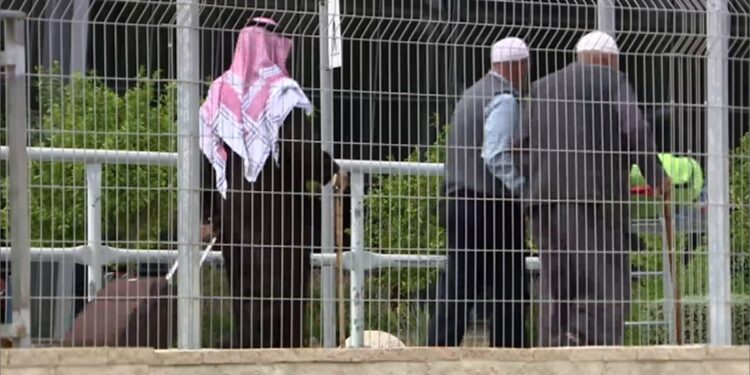Today, The Guardian newspaper reported the stories of thousands of elderly Palestinians, who were repeatedly forced to flee and lost their homes or were destroyed, as a witness to this tragedy wrote.
The author of this article, Ghada Aqeel – a third-generation Palestinian refugee and a visiting professor in the Department of Political Science at the University of Alberta – says that the origin of her brother-in-law, Abu Issam (88 years old), and his wife Umm Issam (84 years old) are from Al-Sawafeer, a village that no longer exists and has been obliterated with more From 500 Palestinian towns and villages in the Nakba of 1948, where Palestinians were mass expelled from their homes and lands after the establishment of Israel.
To escape the destruction that befell Sawafeer in 1948, Abu Issam took refuge in the nearby village of Hamama. When the village was also attacked, his family continued their journey to the Palestinian town of Asdoud (currently Ashdod), then to Al-Majdal (currently Ashkelon), then to Beit Hanoun in the Gaza Strip, and finally ended in the Khan Yunis refugee camp.
At that time, Abu Issam was young. Today, he leans on his cane, stops to rest for a while, and then resumes walking. However, its future remains as uncertain today as it was in 1948.
Aqeel says that Khan Yunis, already crowded with people, became a haven for those fleeing the bombing in northern Gaza, only to be pursued there by the attack.
In late October, Abu Essam, his wife, their daughters Sanaa and Najwa, and the family of their eldest son Abdullah, along with his wife Shifa and his five children, were forced to flee after their residence in the camp was bombed, killing many of them.
The family was again forced to walk approximately 3 kilometers through the rubble to their son Omar’s new apartment, which they bought last year in Hamad Town, in search of safety.
A second Nakba
But the new city was subjected to violent air strikes, which led to the destruction of dozens of residential towers and the homes of hundreds of families. By God’s will, the family survived the raids, so his parents were forced to move again. This time, they all sought refuge in the city of Khan Yunis, in the home of one of his grandchildren, Aisha, a 27-year-old lawyer.
The next night, Israel bombed the neighborhood. Aisha’s house was not directly hit, but it became uninhabitable. Aisha and her husband’s family gathered some necessities and headed to Rafah refugee camp to join other relatives. Then Abu Issam decided to return to his home in Khan Yunis. During the trip, his wife fell into a diabetic coma, and getting her to safety was an additional struggle.
Aqeel continues to narrate the suffering of Abu Issam’s family, which is almost never ending. On December 8, his nephew’s house was subjected to a direct bombardment, in which his nephew’s son, Mahmoud, his daughter-in-law, and their infant were martyred. Abu Issam sat with his seven grandchildren while neighbors retrieved bodies from under the rubble. He performed the funeral prayer for them in the street because the nearby mosque had been leveled.
After the burial, Abu Essam decided to seek shelter in the United Nations school near Nasser Hospital, to be close to any health facility if his wife’s health deteriorated. The school did not accept him at first because it was overflowing with residents, but his wife’s tears, their age, and pleas made the school eventually agree to host them.
The author concluded that there are tens of thousands of people like Abu Issam and Umm Issam moving from one place to another, and they are already in their fifth or sixth stage of displacement, and they face starvation in horrific conditions, with few toilets, and the minimum amount of rationed food and drink to sustain life. .
At the age of eighty-eight, Abu Issam went through the Nakba twice. And every time, the international community, led by Western governments, takes the position of complete accomplice. The Palestinians will never forget, and will never forgive, this.



